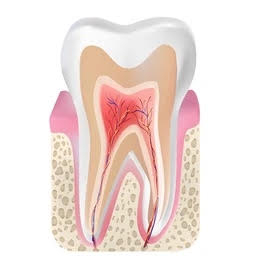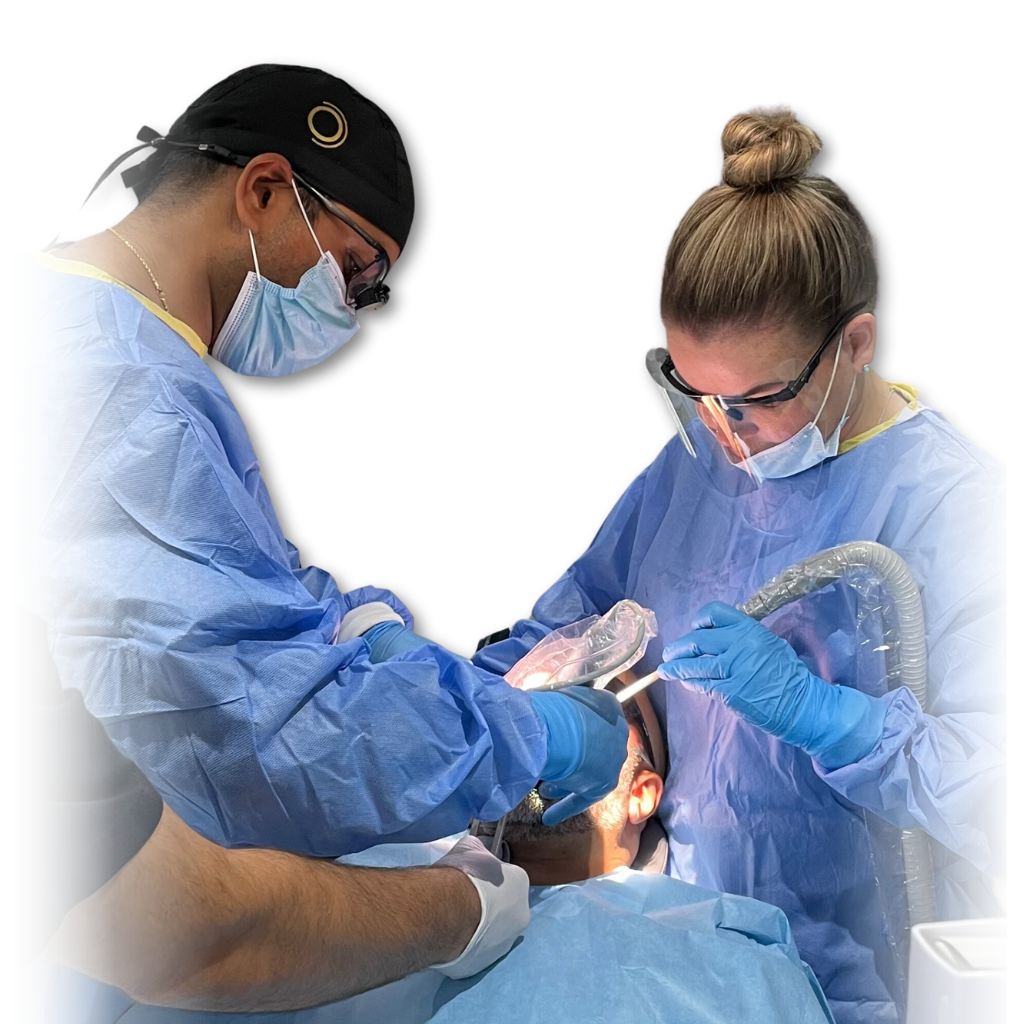Root Canal Treatment
What is a Root Canal?
A root canal is a dental procedure used to treat and save a tooth that is badly decayed or infected right in the centre. During the process, the damaged area of the tooth (the pulp) is removed, the space is cleaned and filled with gutta-percha (a plant-based thermoplastic), and then sealed. This treatment helps relieve pain and makes your tooth healthy again.
When is Root Canal Treatment Needed?
Root canals are necessary when the pulp, the soft inner core of your tooth that contains blood vessels, nerves, and connective tissue, becomes inflamed or infected. Infection to a pulp is caused by bacteria entering the pulp chamber. This can occur for several reasons, including:
- Severe Tooth Decay: When cavities penetrate through the enamel and dentin and reach the pulp, it can lead to infection.
- Trauma: A blow to the tooth may damage the pulp even if there are no visible chips or cracks.
- Repeated Dental Procedures: Frequent drilling or filling of the same tooth can cause undue stress on the pulp.
- Cracks and Chips: Visible damage to the tooth can provide a pathway for bacteria to reach the pulp and cause infection.
Advanced Gum Disease: Infection from gum disease can spread to the pulp of the tooth.

Understanding Tooth Structure
To properly understand root canal, you must also understand the basic structure of a tooth.
The tooth has 4 layers:
- Enamel – the hard outer layer of tooth
- Dentine – the softer inner layer of tooth
- Cementum – the hard material that coats the root’s surface
- Pulp Chamber – this tissue contains blood vessels, nerves and connective tissue, needed for early development stages
A fully formed adult tooth can survive without the pulp as it continues to be nourished by the soft tissues surrounding it.
Signs You Need a Root Canal Procedure
Once a bacterial infection has spread inside the pulp chamber, it multiplies, eventually causing symptoms such as:
- Pain when eating or drinking hot or cold food and drink
- Pain when biting or chewing
- A loose tooth
These are the first signs that something is not right, and you should get your tooth checked as soon as possible if you notice any of these symptoms.
If left, the infection will eventually cause the pulp to die, and these symptoms disappear, giving the impression that the tooth has healed. This is far from the case, and the infection has spread through the canal system, ultimately leading to further symptoms such as:
- A returning pain when biting or chewing
- Swelling of the gum near the affected tooth
- Pus oozing from the affected tooth
- A swollen cheek or jaw
- The tooth becoming a darker colour
For many people, these latter-stage symptoms are the first signs of anything being wrong with their tooth, and seek immediate treatment for infection with antibiotics. Although antibiotics help with the infection on a short-term basis, they will never truly remove the cause of the infection. The only way to do this is by removal of the dead pulp–root therapy.

What to Expect from a Root Canal Procedure?
Root canal therapy is highly effective and pain-free with the help of modern dentistry, but it’s normal to wonder what your appointment will look like if you’ve never had this type of dental procedure before.
- Diagnosis: The process starts with X-rays or other imaging to assess the extent of the infection.
- Anaesthesia: To ensure you feel no pain during the procedure, a local anaesthetic is administered to numb the tooth and surrounding area.
- Pulpectomy: An opening is made in the crown of the tooth to access and remove the infected pulp. The canals are then cleaned and disinfected to eliminate bacteria and debris.
- Filling the Canals: After cleaning, the canals are filled with a biocompatible material, usually gutta-percha. This step helps maintain the stability and structure of the natural tooth.
- Sealing the Tooth: The tooth is sealed with a temporary filling to prevent contamination of the cleaned canals.
Restoration: You will need a follow-up visit for the placement of a permanent restoration, such as a crown, to restore full function and appearance to the tooth, and to protect it from further issues.
Root canal aftercare
Once a tooth has been root filled, it is important to look after it.
- If you have had local anaesthetic, it may take up to 4-6 hours for the effects to wear off. During this time, please ensure that you refrain from chewing your lip, inner cheek, tongue or soft tissues and drinking hot drinks to avoid unwittingly causing trauma to the area.
- Your mouth has been worked on, so there may naturally be a small amount of tenderness, bruising and sensitivity to the area for a couple of days. If there are still worsening symptoms of pain after 7 days, contact the practice for advice.
- If you do not have a crown fitted, be extra careful on biting and chewing with the tooth. The strength of the tooth structure has been compromised and should be treated with care.
- If you have symptoms of swelling, pain, sensitivity to heat, or abscess around the treated tooth in the subsequent months, contact the practice immediately for advice.


